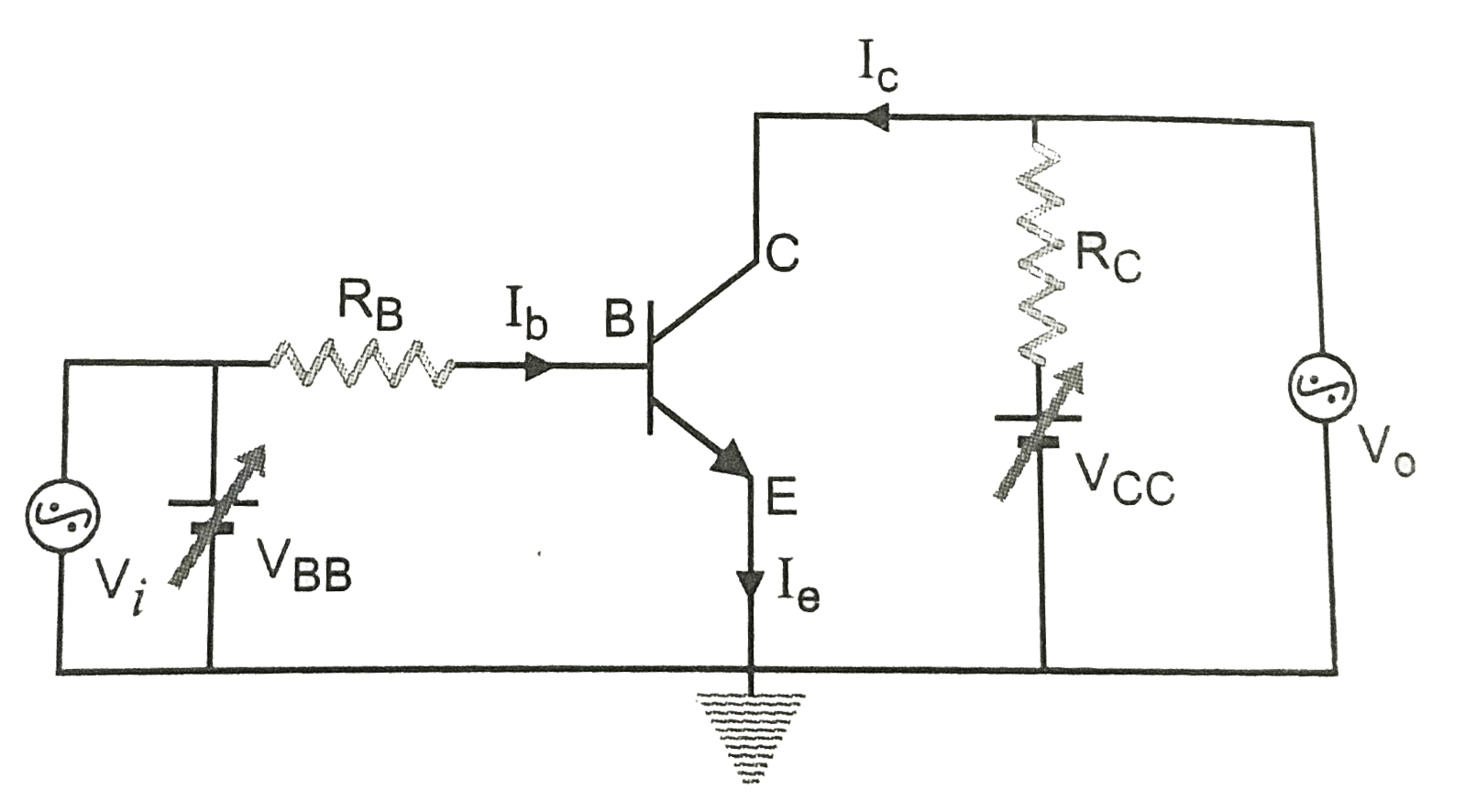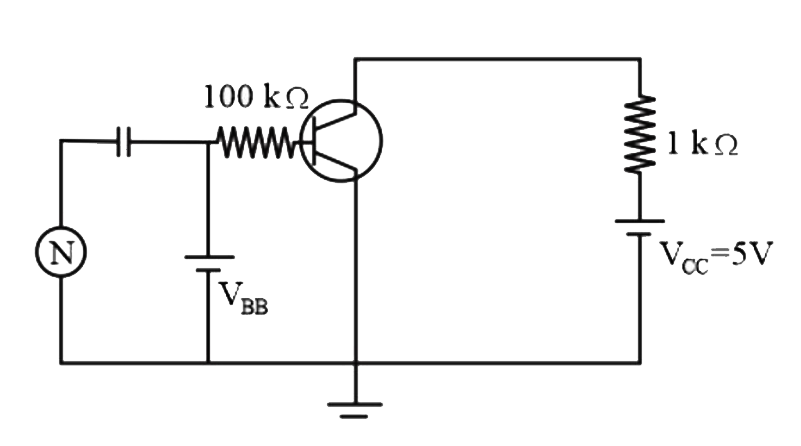Transistors can work as a switch in
Saturation region
Active region
Cut off region
Both (1) and (3)
The correct Answer is:D
To determine how transistors can work as a switch, we need to understand the different operating regions of a transistor and how they relate to switching applications.
1. Understanding Transistor Operation:
- A transistor can operate in three main regions: cut-off, active, and saturation.
- In the cut-off region, the transistor is OFF, meaning no current flows through it.
- In the saturation region, the transistor is ON, allowing maximum current to flow.
2. Identifying Switching States:
- For a transistor to function as a switch, it needs to be able to switch between the ON and OFF states.
- The ON state corresponds to the saturation region, while the OFF state corresponds to the cut-off region.
3. Evaluating the Options:
- Option A: This option states that transistors can work as a switch in the saturation region (ON) and cut-off region (OFF). This is correct.
- Option B: This option suggests that transistors can work as a switch in the active region. However, in the active region, the transistor does not fully turn ON or OFF, which makes it unsuitable for switching applications. This option is incorrect.
- Option C: This option also states that transistors can work as a switch in the saturation and cut-off regions, which is correct.
- Option D: This option claims that both options 1 (A) and 3 (C) are correct. Since both A and C are indeed correct, this option is also correct.
4. Conclusion:
- The correct options for how transistors can work as a switch are options 1 (A) and 3 (C), which are both valid. Therefore, option D, which states that both 1 and 3 are correct, is the right choice.
Final Answer:
The correct option is D: Both 1 and 3.
- A transistor can operate in three main regions: cut-off, active, and saturation.
- In the cut-off region, the transistor is OFF, meaning no current flows through it.
- In the saturation region, the transistor is ON, allowing maximum current to flow.
- For a transistor to function as a switch, it needs to be able to switch between the ON and OFF states.
- The ON state corresponds to the saturation region, while the OFF state corresponds to the cut-off region.
- Option A: This option states that transistors can work as a switch in the saturation region (ON) and cut-off region (OFF). This is correct.
- Option B: This option suggests that transistors can work as a switch in the active region. However, in the active region, the transistor does not fully turn ON or OFF, which makes it unsuitable for switching applications. This option is incorrect.
- Option C: This option also states that transistors can work as a switch in the saturation and cut-off regions, which is correct.
- Option D: This option claims that both options 1 (A) and 3 (C) are correct. Since both A and C are indeed correct, this option is also correct.
- The correct options for how transistors can work as a switch are options 1 (A) and 3 (C), which are both valid. Therefore, option D, which states that both 1 and 3 are correct, is the right choice.
The correct option is D: Both 1 and 3.
Topper's Solved these Questions
Similar Questions
Transistor can be used as :-
View SolutionDraw a labelled circuit diagram of a transistor as a switch and draw its input and output graphs.
View SolutionA transistor is a/an
View SolutionIn common emitter transistor as shown in Fig., the VBB supply can be varied from 0 V to 5.0V. The Si. Transistor has βac=250 and RB=100kΩ,Rc=1kΩ,VCC=5.0V. Assume that when the transistor is saturated, VCE=0V and VBE=0.8V. Calculate the minimum base current, for which the transistor will reach saturation. Hence, determine Vi when the transistor is 'switched on' find ranges of Vi for which the transistor is switched off and switched on.

View SolutionTo identify whether the transistor is working or not, using multimeter, which statement serves the purpose?
View SolutionAssertion: A transistor can be used as an amplifier.
Reason: A small change in input current can change output on a large scale.
View SolutionThe current gain for a transistor working as a common-base amplifier is 0.96. If the emitter current is 7.2mA, the base current will be
View SolutionVBB can vary between 0 and 5 V. Find the minimum value of base current and VBB, so that transistor works in saturation mode. [Given β=200andVBE=1V]

View SolutionA transistor cannot be used as an
View SolutionFrom the following transistor characteristics, what can be inferred?

View Solution